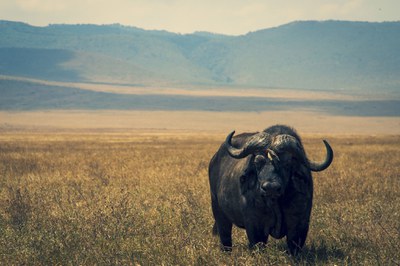East African Communities Reduce Human-Wildlife Conflicts

In East Africa, the problems of climate change and degraded ecosystems have turned their solution into a literal moving target as shifting migratory patterns impact industries and individuals alike. Fortunately, public and private stakeholders are making headway with efforts that boost understanding and incentives for protecting ecosystems that sustain communities.
In the Economics of Natural Capital in East Africa project, the United States Agency for International Development (USAID) and its partners in the East African Community (EAC) conducted a first-of-its-kind study of the region’s natural capital and its economic value. The study focused on four key landscapes containing iconic wildlife, forests, grasslands, and waterways that not only cross borders but deliver critical ecosystem services upon which governments, businesses, and millions of people are mutually dependent.
The study found that many communities in these transboundary landscapes are part of ecosystems altered by climate change and other harmful impacts. These communities typically rely on small-scale agriculture, pastoralism, fishing, or harvesting of natural resources for livelihoods, and they have limited access to alternative income sources.
The tourism sector, meanwhile, depends heavily on the existence of iconic species that migrate across boundaries. Fragmented habitats, interrupted or reduced water flows, and blocked wildlife migratory routes are harming large and small businesses across all EAC partner states.
A key outcome of the USAID-backed study is an Action Plan that recommends several approaches for improving ecosystems and community resilience. EAC partner states met in December 2021 to review and affirm the Action Plan, and they agreed to launch a priority pilot project in each transboundary landscape. For example, in the Great East African Plains landscape, the pilot project will be the pasture restoration of at least 2,000 hectares to improve livestock productivity and increase space for wildlife. This will involve EAC national and sub-national governments, development partners, and the private sector.
Alternate and diversified livelihood opportunities are necessary to help ease human-wildlife conflicts, the study found, but these must be nature-based enterprises that align with community values.
A Local Perspective from Kenya’s Iconic Amboseli
The Great East African Plains landscape draws about $1.2 billion annually from nature-based tourism. Communities in this landscape, which includes southern Kenya’s world-famous Amboseli National Park, understand what’s at stake in how they handle human-wildlife conflicts. The Kenya Wildlife Service, which manages Amboseli, provides the community with valuable resources such as education bursaries and helps maintain roads, build schools and provide water.
“In Amboseli we are privileged to have wildlife within our area,” said Nayo Ndoipo, a community elder in Kimana who was interviewed for the study. “The community has lived in harmony with most grazers like gazelles, zebra, elands, and giraffes, just to name a few,” he said.
Human-wildlife conflicts are still the main threat to conservation in this area, he said, mostly due to livestock predation by lions, hyena, and leopards. “But the community has tolerated them because of the tourism benefits,” he said. “There is also conflict between elephants and crop farmers along the streams, springs, and Loitokitok agricultural belt. And the other threat is shrinking wildlife space due to emerging changes in land use.”
Despite these conflicts with wildlife, Ndoipo said, the community “has come together to conserve wildlife” because residents benefit from tourism activities such as cultural manyatta and the sale of beads and carvings. Residents are now more accepting of alternatives to killing the encroaching wildlife.
He points to a local conservation program that sets aside land for the community while setting aside land for wild animals as conservancies. More than 80 percent of wildlife in Amboseli are now in community conservancies or community pastoral areas. “For example, the Eselenkei Conservancy, Kitenden Conservancy, and Kimana Sanctuary areas are used as dry season grazing areas for livestock as well as areas for game viewing by tourists,” he said.
Ultimately, it’s clear that community-based natural resource management is helping to protect local habitats and reduce human-wildlife conflict. “When communities are allowed to voluntarily give out their land for conservation with good returns, there is high possibility that wildlife and habitats will be secure,” he said. “If the community is able to realize benefits, then the future of wildlife in Amboseli will be guaranteed.”
For more information:
Chihenyo Kangara
Regional Climate Change & Resilience Specialist
USAID Kenya & East Africa
Nairobi, Kenya


